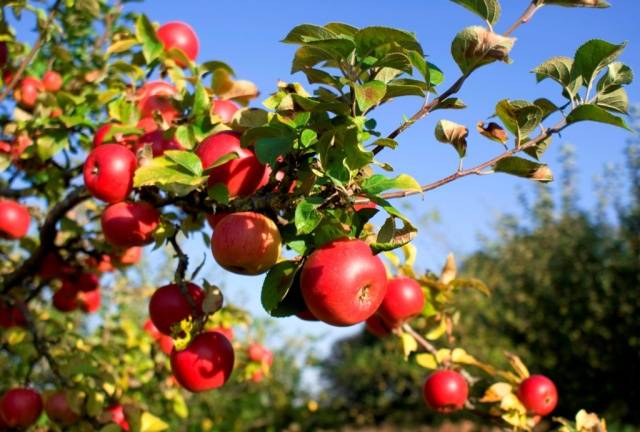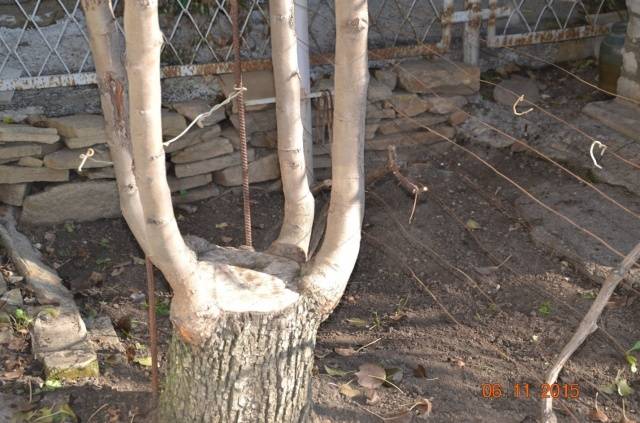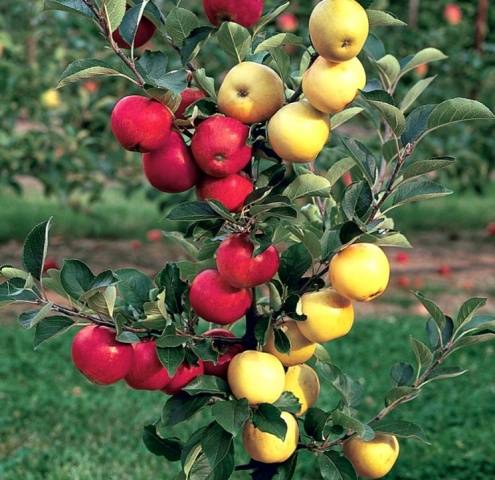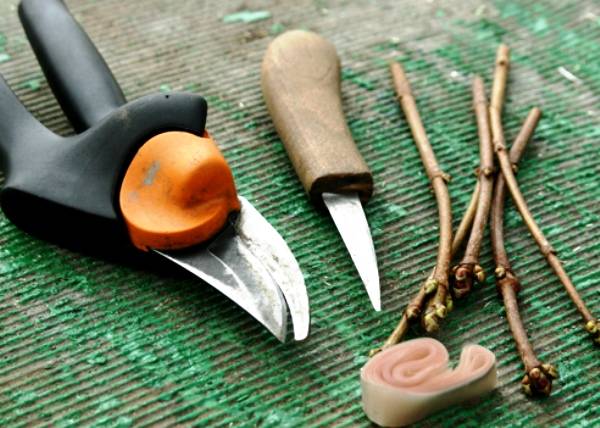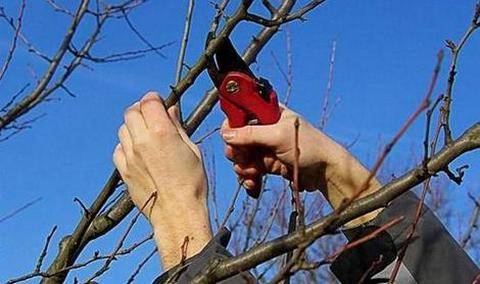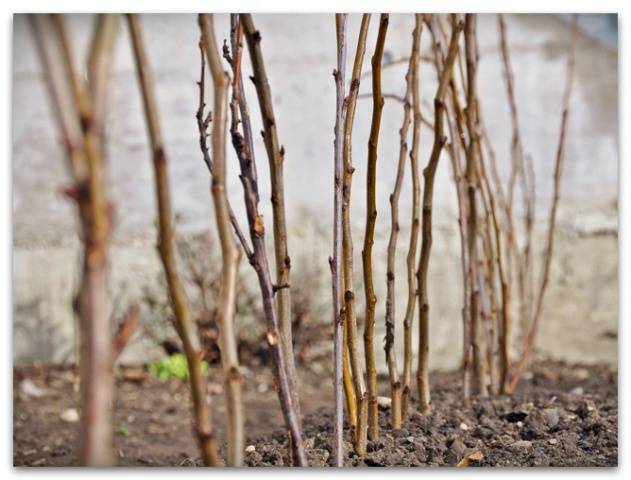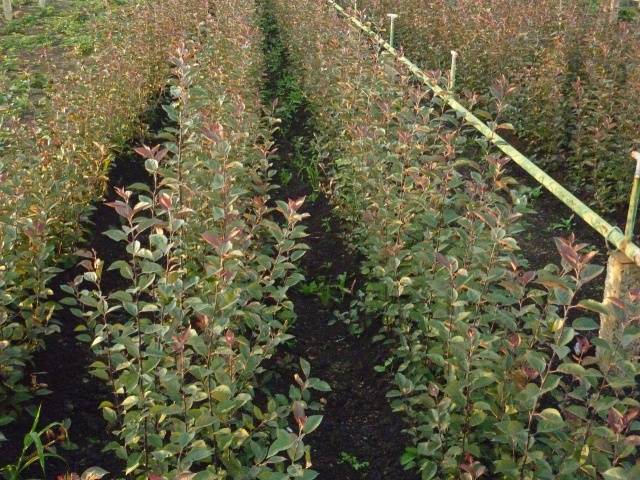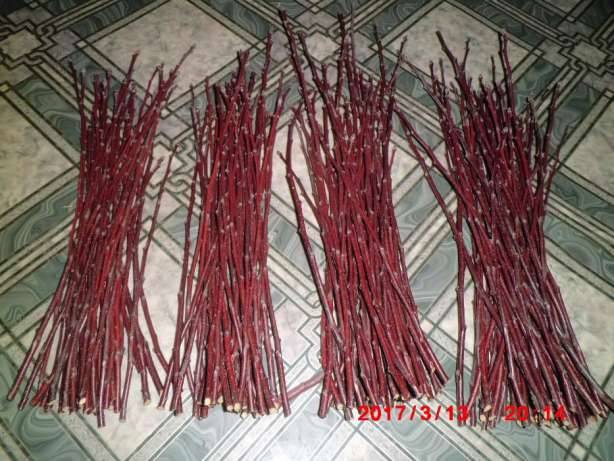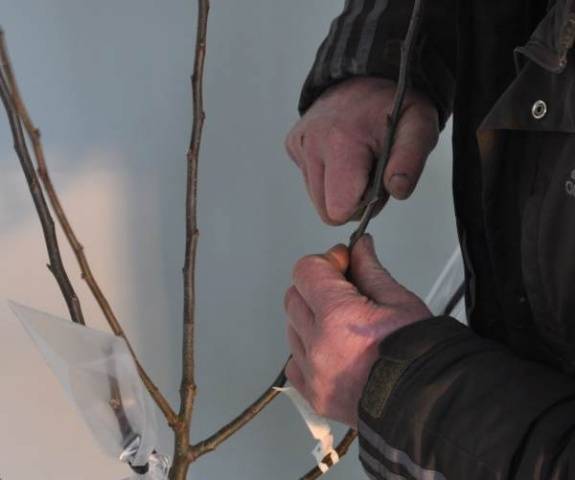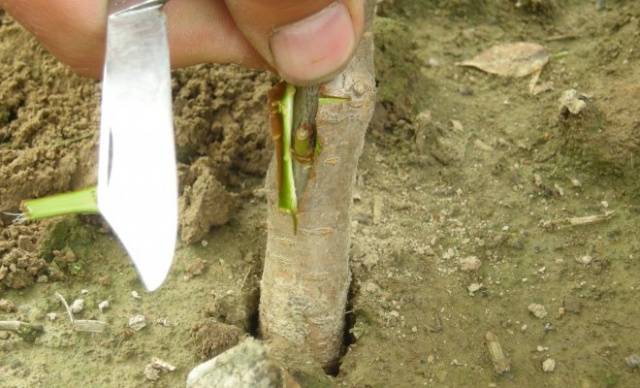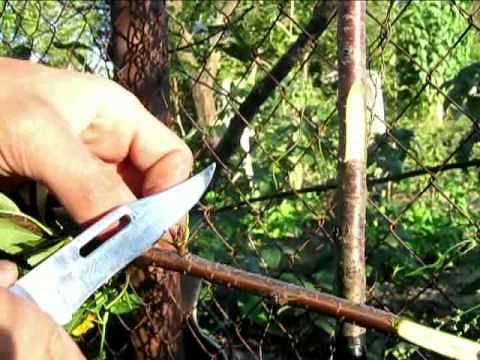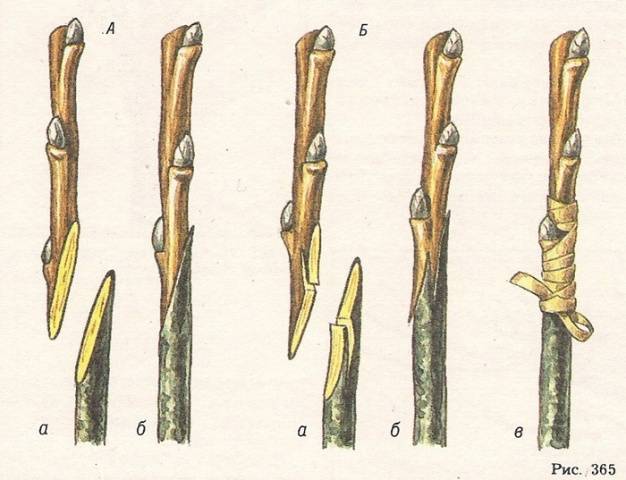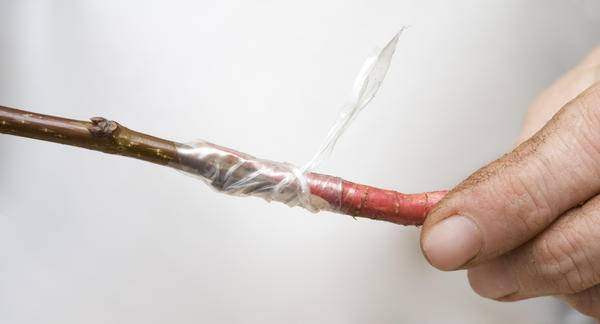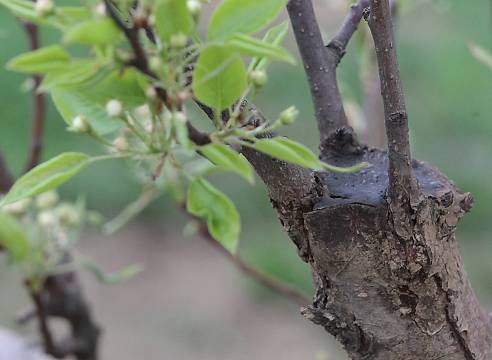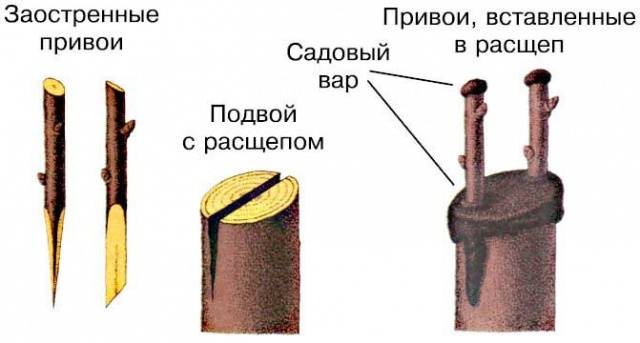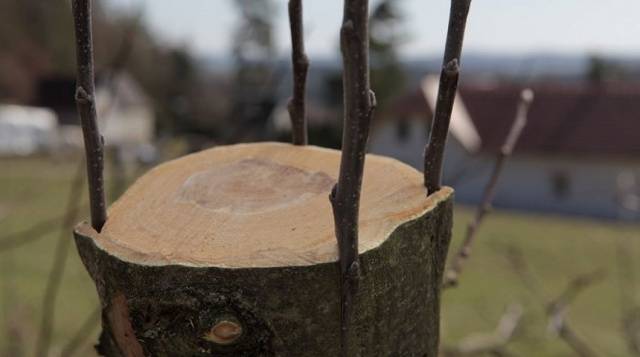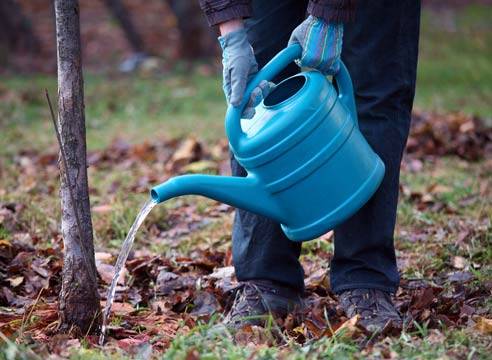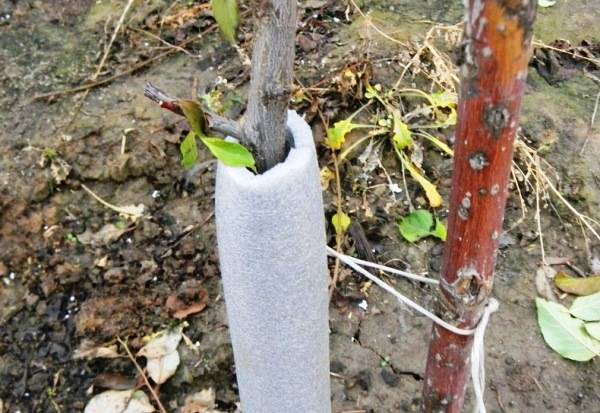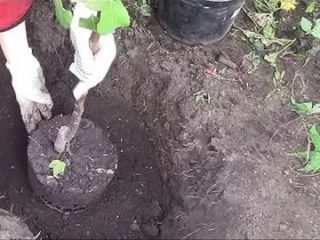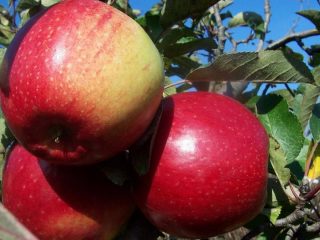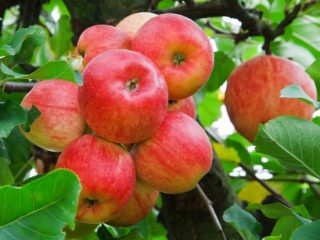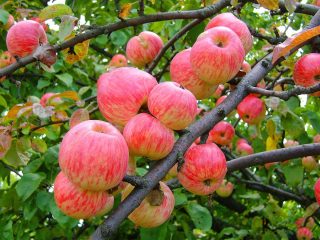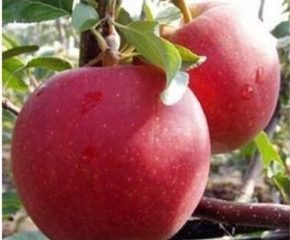Content
Grafting apple trees many gardeners compare it to surgery. And for good reason. Indeed, when performing these works, it is important to comply with all the recommendations and terms of experienced gardeners. And most importantly, grafting apple trees is, one might say, a creative process. It is very interesting to observe how a small stalk, grafted onto a wild bird seedling or an old tree, grows, blooms and gives a bountiful harvest of fragrant, tasty apples.
If for experienced gardeners grafting is a familiar thing, then beginners have a lot of questions: how to graft an apple tree in the fall? When is the best time to work in the garden? What and in what way to vaccinate? In this article you will find answers to many questions.
Why vaccinate
Mankind learned to plant apple trees more than five thousand years ago. Thanks to selection, a large number of new varieties have been created, which annually delight gardeners with yield. What attracts the owners of summer cottages to inoculate apple trees?
- Grafting apple trees is a limitless opportunity to experiment with the goal of obtaining new varieties or improving the varietal characteristics of an apple tree.
- Poor yields are another reason to renew an old tree and graft an apple tree in the fall.
- Thanks to grafting, existing varieties can be propagated and the range of trees growing in the garden can be expanded.
- Your apple tree began to dry, hurt and had to be cut down? Do not rush to uproot the stump - several branches can be grafted onto it and after a few years it will again delight you with fragrant fruits.
- Do you have a small plot where there is not enough space to grow enough of your favorite varieties of fruit trees? Do not despair! Thanks to grafting, up to 3-5 varieties can be grown on one apple tree.
- And one more plus. The apple tree is a very generous fruit tree. And sometimes it bears fruit so abundantly that gardeners do not know what to do with apples, distributing them to neighbors and friends. If on one apple tree you have several varieties with different ripening rates, then you will process the ripe crop in a timely manner and without loss.
Whatever the reason, there is little left to do - to learn how to properly plant an apple tree in the fall. And this process is not so complicated.
When can you plant apple trees
Experienced gardeners advocate spring grafting of apple trees... However, many of them note that fruit trees can be grafted not only in spring, but also in autumn, and even in winter, provided that the thermometer drops at least -10˚С -15˚С. Whenever you decide to take up this exciting business, at any time it is important to meet the deadlines and be sure to pay great attention to the weather conditions.
Grafting an apple tree in the fall does not even require a large number of skills and abilities from novice gardeners. Grafting works in the garden begin in the second half of August - early September. It is very important to have time to complete all work at least a month before the expected frost.
In the northern regions, all work should be completed in mid to late September. In the central regions and the Moscow region, this period is shifted by two weeks. And in the southern regions, before the first days of October, they do not start grafting apple trees in the fall.They try to finish all work here by early-mid November.
Before starting work in the garden, pay attention to the forecasts of weather forecasters. If frosts are not expected for the next three to four weeks, then you can proceed to such a responsible event. If the prognosis is unfavorable, then it is better not to risk it and postpone the grafting of apple trees until the spring.
Tools and materials for grafting apple trees
In order to qualitatively carry out a number of activities for grafting apple trees, you will need the following tools:
- A very sharp garden knife or pruner. Please note that the cut on cuttings intended for grafting apple trees must be done in one motion. Before starting work, thoroughly wipe the entire tool with alcohol to avoid infection. After all, any cut is actually an open wound.
- Insulating tape. If you don't have any insulating material, you can use a small strip of polyethylene and twine.
- Garden var.
In addition to tools, you will need: stock, scion and, of course, desire. Rinse and disinfect hands well immediately prior to vaccination. Remember not to touch open cuts, even with clean hands.
What can be used as a rootstock
Grafting apple trees in the fall is a very simple process that even a novice gardener can successfully handle.
Before you start grafting, you need to take care of the rootstock in advance. Young apple seedlings at the age of 2-3 years are excellent as a stock. Excellent results are obtained by grafting apple trees to the wild. After all, young shoots of wild game are adapted to local climatic conditions, and also have high resistance.
Many gardeners grow apple seedlings for rootstock on their own, planting seeds in the ground in advance. You can also use old apple trees for the stock. The main thing is that the fruit crop is healthy. Diseased rootstocks with signs of disease or damaged by ubiquitous insects cannot be used for grafting apple trees.
If there are no suitable seedlings or fruit trees in your garden, you can graft the apple tree on the following fruit crops:
- Common and black chokeberry;
- Quince;
- Pear;
- Viburnum;
- Hawthorn.
If you chose one of the above seedlings as a rootstock, be prepared for the following problems: poor survival rate, gradual crushing of fruits and a decrease in yield, short fruiting period. Many experts consider grafting apple trees on third-party seedlings rather as an experiment.
If you want to get a guaranteed abundant harvest of tasty and aromatic apples, use only apple seedlings and trees as a rootstock.
How to choose a scion
A "graft" is a stalk you would like to graft. How to choose and cut a scion correctly?
Cuttings should only be made with a healthy apple tree that brings abundant yields. Before cutting, it is important to know that the scions are not subject to long-term storage, which means that they need to be prepared in the amount that you can use during the day.
The length of cuttings for grafting an apple tree should be 25-30 cm. It is very important that after grafting on each shoot there are at least 4-5 healthy buds. The thickness of the cuttings, ideal for grafting, is 1-1.3 cm.
Vaccination methods
There are more than ten ways of grafting apple trees. But given that many of them require special skills, as well as special conditions of detention, gardeners, by trial and error, have identified the most effective and simple to execute:
- Budding (or budding);
- Copulation;
- Cleft grafting;
- For the bark.
Budding, or budding, can significantly save grafting material. They use this method of grafting apple trees in early spring, when the buds on the shoots have not yet begun to grow, or in early autumn, while sap flow is still continuing in the trunks.
Copulation is the most common method. Gardeners use it if the rootstock and the scion, that is, the seedling and the stalk, are the same in thickness. If the diameter of the scion and the rootstock is very different, then it is best to graft the apple tree by the method "in the split" or "behind the bark". Moreover, the last method is perfect when you need to revive the sick, old trees, which the hand does not rise to uproot.
It is best to plant apple trees when the weather is cloudy, but not rainy. If the Indian summer turned out to be hot, then the vaccination should be done early in the morning or in the late afternoon.
Remember that grafting apple trees is identical to surgery. All actions must be carried out with clean hands and as quickly as possible. The less the open cut is left in the open air, the higher the chance for the scion to take root.
Grafting by budding method
Budding is a universal method of grafting apple trees. Firstly, a novice gardener can also cope with it, it is so simple to perform. Secondly, thanks to him, you can not cut the cuttings, saving grafting material. And thirdly, grafting of apple trees with this method can be done in autumn or spring. It is desirable that the kidneys for grafting be in "sleep mode".
Algorithm of actions for budding:
- A healthy kidney is selected on a one-year-old scion shoot. You need to cut off the bud with an adjacent section of bark and a thin layer of wood, the so-called shield. All actions must be done carefully, trying not to break the delicate kidney.
- Make a T-shaped incision on the rootstock shoot and gently push the bark apart at the incision sites.
- Carefully insert the "shield" under the bark, not forgetting the correct location of the kidney - it should look up. Straighten the corners of the bark on the rootstock.
- Carefully wrap the vaccination site with electrical tape or plastic wrap, leaving the grafted kidney on the surface.
At least 2-3 weeks later, you need to carefully examine the vaccination site. If the engraftment process went off with a bang, you can loosen the bandage a little.
Copulation
The grafting of an apple tree by the copulation method is carried out only if the rootstock and the scion are the same in thickness. The diameter of the stem of the rootstock and the scion cuttings should not exceed 2-2.5 cm. Most often, this method is used to inoculate apple trees at the age of 1-2 years, not older.
Copulation is a universal method, because it allows gardeners to graft cuttings at any time of the year: in spring, summer, autumn and, in rare cases, in winter for grafting apple trees at home.
The meaning of copulation is to make almost the same cuts on the shoots of the rootstock and scion and connect them into one branch, like puzzles are connected. The more densely the cambial layers of the scion and rootstock are connected, the more likely it is that the process of engraftment of the apple cutting will be successful.
Copulation is of two types - simple and improved.
The principle of operation is the same in both cases. The only difference is that with improved copulation, not a simple cut is made on the scion and rootstock cuts, but a zigzag cut, which allows the shoots to be connected as tightly as possible.
- On the rootstock, it is necessary to make an even, oblique cut 3-4 cm long. You need to cut off the shoot in one motion so that the surface is perfectly flat and smooth.
- Make an identical cut on the scion.
- Combine the scion and stock, pressing lightly together. Wrap the junction tightly with electrical tape or plastic wrap.
- Those grafting sites that did not fall under the insulating layer must be immediately treated with garden varnish.
The so-called grafting pruner received a large number of positive responses from gardeners. Thanks to sharply sharpened and perfectly matched knives, the cuts on the scion and rootstock are identical and perfectly match each other, which greatly simplifies the process of grafting apple trees.
Cleavage grafting
This method of grafting apple trees is perfect if the graft and rootstock differ greatly in diameter. In this way, you can significantly increase and update the crown of apple trees. It is also used by gardeners when growing multi-varietal apple trees.
For rootstock, stems aged 3-6 years or skeletal branches, the diameter of which ranges from 2 cm to 10 cm, are well suited. Grafting of an apple tree into a split in autumn can be carried out as long as active sap flow continues in the trunks. This work can be done until mid-September.
In order to plant an apple tree in the cleft, you should proceed as follows:
- Cut the skeletal branch or stem of the rootstock and clean it with a knife.
- Split carefully along the rootstock. A gap that is too deep is unnecessary. To prevent the cleft from closing, insert a screwdriver or knife into it for a while.
- On a scion handle with 3-5 well-developed buds, oblique cuts no more than 3.5-4 cm long are made on both sides. You should get a kind of wedge.
- Insert the scion into the split on the rootstock so that the slices are completely hidden in the cracks.
- Wrap the branch or bole tightly with electrical tape or plastic.
- Treat the remaining open cuts with garden varnish.
This method of grafting apple trees is unique in that up to 5-6 scions can be inserted into one split, depending on the diameter of the rootstock. Thus, you will get several shoots that have taken root at once.
Grafting for the bark
This method of grafting apple trees can give a second life to old fruit trees. You can graft an apple tree in the fall both to a separate skeletal branch, and to a small hemp. It is important that its length from the ground is at least 50-70 cm from the ground. Due to the simplicity of this method, apple trees can be grafted behind the bark both in early spring and in autumn. The main thing is that the bark is easily separated from the trunk. You need to act in accordance with the following recommendations:
- Cut the skeletal branches at a distance of 50-70 cm from the trunk, leaving 2-3 for sap flow.
- Clean the saw cut with a garden knife until it is perfectly even and smooth.
- Make a vertical incision on the bark of the top of the rootstock. The length of the cut is 4-6 cm. Make sure that the knife only cuts through the bark, not cutting the wood.
- With the blunt side of the knife, gently pry and spread the bark in different directions.
- On a scion with 4-5 well-developed buds, make an oblique cut with a length of at least 3 cm.
- Insert the scion behind the bark with a cut to the trunk. It is very important that the cut on the cutting "peeks out" by 1-2 mm above the cut of the rootstock.
- Fix the vaccination site with electrical tape or plastic wrap and treat with garden varnish.
As you can see, there is nothing complicated in all methods of grafting apple trees. The main thing is not only to comply with all the recommendations, but also to monitor and timely care for the grafted shoots. And then the apple tree will thank you with a generous harvest for your care and attention.
The author of the video talks in detail about what tools are needed and how to prepare them for grafting an apple tree. He also very clearly and clearly reveals his secrets of grafting.
How to care for grafted apple trees
It is necessary to care for the grafted seedlings, regardless of the method of grafting the apple tree. Once every two weeks, you need to carefully examine the vaccination sites.
When budding, pay close attention to the condition and appearance of the grafted kidney.For other methods of grafting the apple tree, carefully examine the scions. At the slightest suspicion that the scion or bud has not taken root, unwind the graft site, remove the shield or stalk and cover the incision with garden varnish.
It is undesirable to remove the "bandage" from the vaccination sites with a successful outcome until spring. But with the onset of a thaw, it is necessary to gradually weaken it, since during this period the growth of branches begins.
To ensure good nutrition for the grafted seedlings, all shoots growing below the graft site must be promptly and ruthlessly removed with pruning shears.
Before the onset of frost, one should not forget about the obligatory autumn watering and hilling of apple trees, thus preparing them for winter.
As soon as you see that the scion has taken root perfectly, and the first shoots have appeared from the buds, prune, leaving only the strongest ones.
It is necessary to tie the grafted apple seedlings when the shoots reach a height of 25-30 cm. Re-tie is required when they reach a height of 40-50 cm. This is necessary so that the seedling does not break under the weight of its weight or from the wind, since the grafting site is near apple trees grow together for a long time - at least 2-3 years.
Remember that after grafting an apple tree needs a lot of time and effort for the healing of damaged tissues to go well. Feeding the apple tree in a timely manner fertilizers, you help her to regain her strength and, even before the onset of winter, gain the required amount of nutrients.
Before the onset of frost, do not forget to insulate the apple tree seedlings and protect them from rodents.
Conclusion
Grafting apple trees in the fall allows you not only to diversify the assortment of your garden, but also significantly save time and money. After all, it will take several years to grow a healthy, perfectly fruitful tree. Apple tree seedlings are not cheap. Therefore, the benefits in this case are obvious. After a couple of years, you will be able to enjoy the fruits of your labor by harvesting the first harvest of apples.
